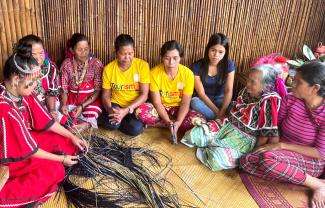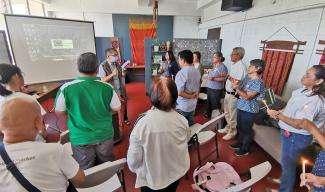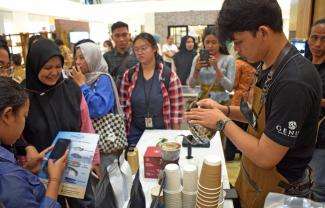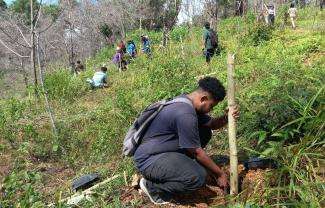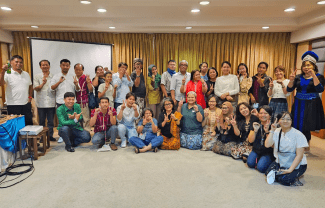It’s damgo In Bisaya or Cebuano and damugu among the Higaonon and Talaandig. Both words mean the same thing -- dream. It’s also the name that the Lumad weavers of Barangay San Rafael in Talakag town in Bukidnon gave themselves – Damugu Weavers Association.
Weaving, or paglala, among the islands’ native inhabitants dates as far back as the 13th century. Normally, if not exclusively done by women, the craft served a cultural purpose as the indigenous peoples’ link to the spirits whom they would invoke for protection and good health.
But Irene Sinhayan, who initiated in 2018 the formation of Damugu, lamented that weaving has become a dying art. Truth is, excluding herself, there were only five weavers left in their community when the group was formed in 2018. At 36, she’s the youngest of them all.
It was just providential, Irene said, that the Talakag Tourism Office ordered from her small mats and sling bags for the Kaamulan Festival, an annual fanfare in Bukidnon featuring Bukidnon’s indigenous culture. Ethnic items are mainly used during the street dancing competition, the highlight of the festival. That obliged her to look for weavers so she could meet the demand.
More important, that made her realize the need to revive weaving not only as a livelihood activity but also as a way to keep a cultural tradition alive. It’s a dream that she wanted to come true. She subsequently organized the five weavers into a group that they agreed to call the Damugu Weavers Association.
Of the five weavers, the eldest is Celistina Agsunod, 76, and the only one who knows lettering. The rest are Bai Cornita Sagayan, 54; Susita Taon, 66; Ermelinda Ontihay, 68; and Elgesa Ontihay, 38.
Lack of materials
The weavers are using sudsud (common rush or soft rush), a plant that grows in moist soil, as their material for mats and other items. “However, at the start we had to buy from Barangay Tagbak because there’s no more sudsud left in our place,” Irene recalled.
“It was only in 2022 that we started planting sudsud through a project supported by Samdhana. It’s now harvestable but we have to set aside some of it as planting materials,” she added.
For dyes, Irene said, they are using a plant called palawag. But she said that since palawag can only produce yellow dye, they have to buy other dyes in neighboring Cagayan de Oro City.
“We’re looking for other plants that can produce other colors.” She further noted that they need to undergo more training in coloring.
More weavers, but…
Bai Cornita is considered the master weaver. “I just tell her what items need to be done, as she already knows the authentic designs,” Irene said.
The group has trained over 30 weavers since, the youngest a nine-year old girl, she said. A mat takes an average of one week to finish. “This is because a weaver has to perform other tasks in her family like taking care of the children,” she explained. She said she herself has children to attend to.
Single-sized mats cost 880 to 980 pesos depending on the intricateness of the design while double-sized ones sell at 1250 pesos, she said.
She added that aside from mats she has also produced mobile phone cases, backpacks and laptop cases from sudsud.
“Yet, we cannot just produce due to problems in financing and marketing. We depend upon orders,” she pointed out, adding some of them would work as manapasay (cane-cutters) to earn some money while waiting for buyers.
In a bid to draw more customers, Irene said she’s using social media to promote their products. Currently residing in Barangay Songco in neighboring Lantapan town, also in Bukidnon, she is making use of the art shops and galleries in the place as display areas.
Songco, a predominantly Talaandig village, is famous for its painters who use soil as their main material as well as musicians who not only perform but also produce bamboo flutes and other ethnic musical instruments.
“I also go wherever the tribe holds an activity [to try and sell our products],” she said.
Nonetheless, Irene felt glad that they now have a kamalig (a two-level hut) that serves as their display center and venue for meetings. It’s also where they cook the sudsud and perform the weaving and dyeing processes. She said it’s difficult to cook the materials at home, although she emphasized that they prefer to weave at home during nighttime. She explained that weaving at night when temperatures are low produces better results. Perhaps, it’s really because dreams come at night. (30)
